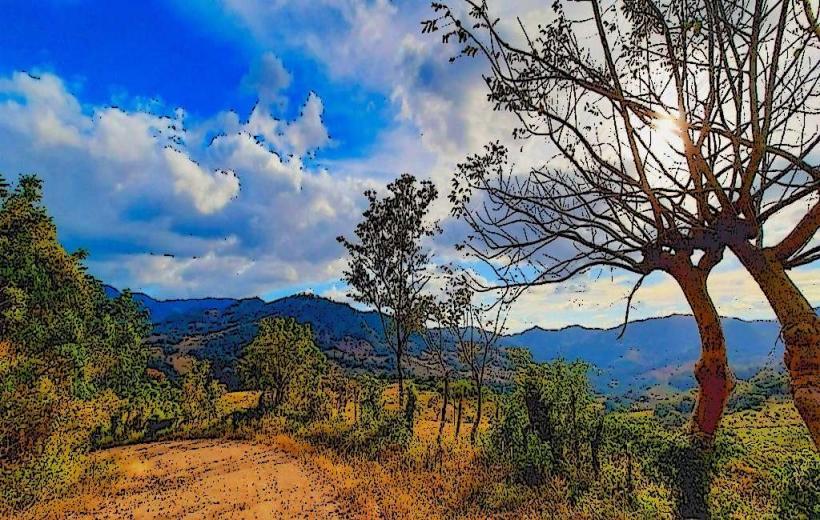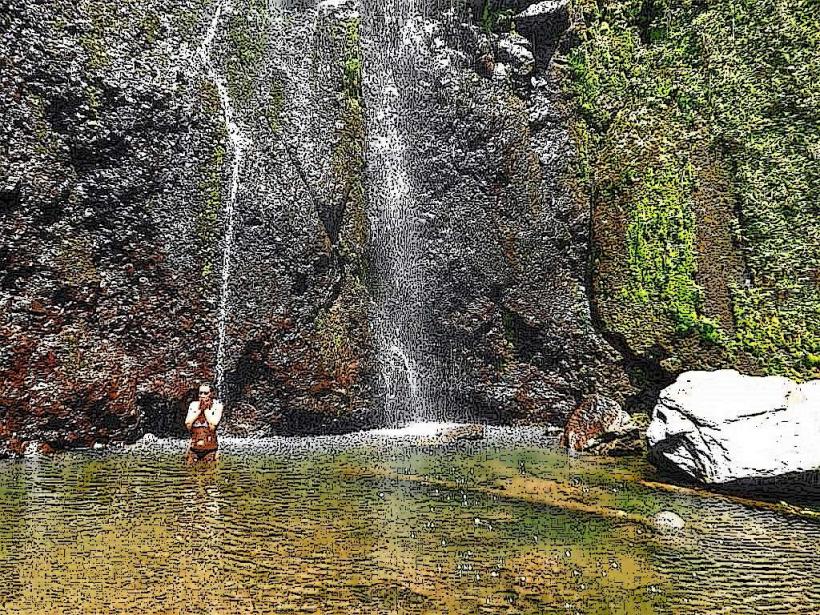Information
City: MatagalpaCountry: Nicaragua
Continent: North America
Matagalpa, Nicaragua, North America
Overview
Matagalpa is both a city and a municipality, tucked into the green hills of central-northern Nicaragua, not only that matagalpa, with its crisp mountain air, misty green peaks, and thriving coffee fields, stands as one of the country’s key hubs for both farming and tourism.Matagalpa is the capital of its department, a bustling center where trucks haul coffee beans, markets buzz with trade, and plans for regional growth take shape, as well as matagalpa sits about 130 kilometers, or 81 miles, north of Managua, the capital of Nicaragua, where the air grows cooler and the hills turn green.Nestled in the central highlands, it’s ringed by rugged mountains, deep valleys, and dense forests, the kind where mist clings to the leaves-perfect conditions for growing coffee, therefore the region offers rugged hills and sweeping views of the mountains, their slopes fading blue in the distance, slightly Sitting about 1,000 meters (3,280 feet) above sea level, Matagalpa enjoys a temperate climate, with mild temperatures between 18°C and 28°C (64°F to 82°F) year-round, what’s more cool mornings draped in mist and fog make Matagalpa a favorite getaway from the sweltering lowlands.From May to October, rain soaks the hills, and from November to April, the skies stay mostly clear, alternatively long before colonial times, the Matagalpa and Chorotega peoples lived here, tending maize fields with practiced hands.The Spanish reached the region in the 1500s, building colonial settlements and weaving European influence into its culture and economy-everything from church bells to fresh farming methods, besides after Nicaragua gained independence from Spain in 1821, Matagalpa grew into a key northern town, prized for its fertile fields and its strategic perch in the highlands.The city thrived as a bustling trade hub, linking the Pacific and Atlantic coasts of Nicaragua; in the 1970s, Matagalpa’s streets echoed with protests and resistance, placing it at the heart of the fight against the Somoza dictatorship, then the region’s steep, rocky hills gave guerrilla fighters a natural advantage, and Matagalpa ultimately helped bring down the Somoza regime in 1979, perhaps Today, the scent of fresh beans drifts from its farms, as it remains one of Nicaragua’s key coffee producers, while rich volcanic soil and a crisp, cool breeze make this locale perfect for growing top-grade Arabica coffee beans.Coffee is the city’s main export, and its economy leans hard on the coffee trade-the smell of fresh beans seems to hang in the air year-round, moreover in this region, coffee grows on both tiny family farms and sprawling plantations, its scent drifting from drying beans in the sun.Matagalpa also turns out beans, corn, tobacco, and fresh vegetables, what’s more the region’s rich, dusky soil yields everything from coffee to maize, sustaining the local economy and feeding Nicaragua’s agricultural exports, while cattle and other livestock remain a vital source of income in Matagalpa.Cattle ranching is a way of life here, with herds grazing on wide, grassy hillsides, and the region turns out meat and dairy for both local tables and export, then matagalpa also links easily by road to Managua and other major Nicaraguan cities.As far as I can tell, You can reach the city by bus, the way most locals and tourists do, with engines rumbling past street markets all day, as well as people get around the city by hopping on local buses or grabbing a taxi, making it simple to reach bustling neighborhoods or a park shaded by jacaranda trees.Over time, Matagalpa’s roads have been upgraded, with smooth pavement now linking it to Managua, Estelí, and the northern stretches of Nicaragua, simultaneously the road from Managua to Matagalpa twists through green hills and neat rows of coffee plants, the air sweet with their scent.Though Matagalpa lacks a commercial airport, the closest major one is Augusto C, in conjunction with sandino International Airport sits in Managua, about two hours’ drive away, with the road winding past dusty roadside fruit stands.Smaller planes can land at a modest airstrip in Matagalpa, which handles regional flights, therefore at the city’s heart sits Parque Morazán, a leafy central square where people linger on sun-warmed benches, maybe Locals love gathering here, chatting on worn wooden benches surrounded by lush grass and quiet stone statues, what’s more colonial-style buildings ring the park, among them the whitewashed Iglesia de San Pedro, whose bell tower rises above the square and gives the area its antique-world charm; it’s also one of the city’s most treasured landmarks, almost Just steps from the central park, the church’s whitewashed walls and colonial arches stand as both a area of worship and a hub for community life, while the Museo de Matagalpa offers a vivid glimpse into the region’s history, traditions, and lush mountain landscapes, likewise you’ll find exhibits on the region’s Indigenous communities, its colonial past, and its part in the Nicaraguan Revolution, including a faded banner from the era.Cerro Apante rises nearby, giving sweeping views of the city and the blue-green mountains beyond, along with cerro Apante draws hikers and nature lovers alike, with trails that wind through thick green foliage and lead to sweeping views of the valleys below.I think, Just outside Matagalpa, the Reserva Natural Tisey-Estanzuela teems with life, sheltering everything from vivid orchids to darting hummingbirds, then the reserve draws ecotourists with its trails for hiking, quiet spots for birdwatching, and untouched stretches of green forest, more or less As far as I can tell, In Matagalpa, you can browse bustling markets piled high with ripe mangoes and fresh coffee, or wander through modern shops and busy shopping centers, as a result the city’s dotted with restaurants serving traditional Nicaraguan favorites like gallo pinto-steaming rice and beans-tacos, and hearty nacatamales.While Matagalpa’s not famous for wild nightlife, you’ll still find cozy bars, laid-back cafés, and easygoing eateries where you can unwind after obscure, as a result compared to large cities like Managua, the nightlife here is mellow, just right for anyone craving a slower pace.All year long, Matagalpa bursts to life with festivals like the Fiestas Patronales de San Pedro, where streets fill with music, dancing, and the scent of fresh corn tortillas, in conjunction with the Feria del Café, or Coffee Festival, is a highlight of the year, honoring the region’s coffee tradition with music, dances, steaming tastings, and colorful exhibitions.In Matagalpa, children can attend both public and private schools, from their first years through the end of secondary school, to boot the city’s home to universities and technical institutes, like the Universidad de Matagalpa, where students dive into higher education in fields such as
Author: Tourist Landmarks
Date: 2025-10-29
Landmarks in matagalpa



